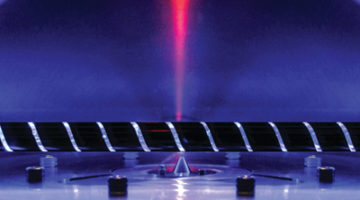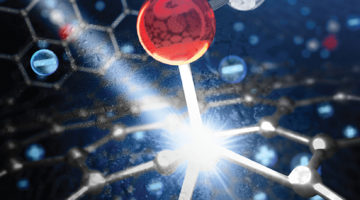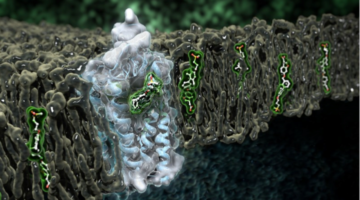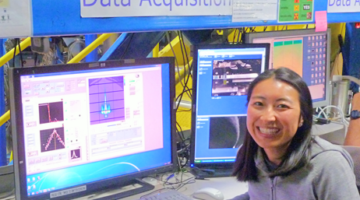For the first time, researchers directly observed QOOH molecules, a class of highly reactive molecules at the center of the web of ignition chemistry reactions. The data generated will improve the fidelity of combustion models used to create cleaner and more efficient cars and trucks. Read more »![]()
![]()
All News & Updates
The Crystallization of PEDOT:PSS Polymeric Electrodes Probed In Situ during Printing
Organic electronics have emerged into a highly interesting field of research with a great variety of applications. P. Müller-Buschbaum and co-workers demonstrate the importance of in situ investigations during the printing process of organic electronics. In situ grazing-incidence wide-angle x-ray scattering is used to follow the crystallization process of highly conductive PEDOT:PSS polymer mixtures. These findings are important for tuning transparent polymeric electrodes for organic electronics. Cover Image by Christoph Hohmann, Nanosystems Initiative Munich (NIM). Read more »
ALS Postdoc Recognized for Outstanding Thesis
Søren Ulstrup, an ALS postdoc who received his Ph.D. from Aarhus University in Denmark last year, was selected by the Aarhus University Research Foundation as one of five promising young scientists to receive its prize for outstanding doctoral thesis. Watch a video of Søren describing his thesis, “A Direct Study of the Electronic Structure of Graphene.” Read more »
Spectroscopy of Supercapacitor Electrodes In Operando
X-ray spectroscopy of graphene supercapacitor electrodes under operating conditions reveals changes in electronic structure and bonding. The research could lead to an improvement in the capacity and efficiency of electrical energy storage systems needed to meet the burgeoning demands of consumer, industrial, and green technologies. Read more »![]()
![]()
ALS X-Rays Shine a New Light on Catalysis
Recently a team of Stanford and Berkeley Lab researchers used x-rays at the ALS in a novel way to observe the behavior of electrons during technologically important chemical reactions in metal oxide electrocatalysts. What they learned has upended long-held scientific understanding of how these catalysts work. Read more »![]()
![]()
Takeda Advances Diabetes Drug Development at the ALS
Type 2 diabetes mellitus (T2DM), characterized by abnormally high blood glucose levels, affects hundreds of millions of people worldwide. In the pursuit to better treat this disease, the human receptor protein GPR40 has been identified by pharmaceutical company Takeda as a potential new drug target.
Moore Foundation Funds ALS Researchers for Promising New Technique for Studying Materials
A novel x-ray scattering concept by researchers at Lawrence Berkeley National Laboratory’s (Berkeley Lab) Advanced Light Source (ALS) is receiving support from the Gordon and Betty Moore Foundation in the amount of $2.4 million. The grant was awarded in April by the foundation. The lead investigator on the effort will be ALS Division Deputy Zahid Hussain with ALS Director Roger Falcone acting as co-PI on the project. Read more »
A Fullerene that Breaks the Rules
Scientists used small-molecule x-ray crystallography to verify and characterize the first non-functionalized fullerene with a heptagonal ring in the cage. This new molecule changes the definition of a classical fullerene and expands the range of structural possibilities for endohedral fullerenes. Read more »![]()
![]()
What Goes Up, Must Come Down (and Sometimes Gets Stuck)
High-pressure experiments at Beamline 12.2.2 on ferropericlase—the presumed weakest mineral found in the Earth’s lower mantle—help explain why subducted slabs of Earth’s crust stall at a depth of around 1000 km (~625 miles). Read more »![]()
Elaine Chan Fosters ALS/Molecular Foundry Collaboration
In an ongoing effort to build closer working relationships between Berkeley Lab’s light source and nanoscale science research center, Elaine Chan has recently been appointed by the ALS and the Molecular Foundry to a new role as joint ALS/Foundry project scientist. Chan’s mission will be to foster collaborations between the two facility’s users and to communicate a wider understanding about how the two research centers are mutually scientifically beneficial. Read more »
- « Previous Page
- 1
- …
- 114
- 115
- 116
- 117
- 118
- …
- 128
- Next Page »







